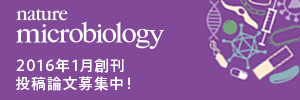PH-107:Molecular analysis of octylphenol degradation by Sphingobium amiense strain YTT
1Tokyo University of Agriculture and Technology, 2Tokyo University of Agriculture, 3Ibaraki University
Octylphenol (OP) and nonylphenol (NP) are known to be endocrine disrupting agents and found as degradation products of industrial detergents, OP- and NP-polyethoxylates, in the natural environment. Previously, a bacterium (YTT) able to degrade OP and NP was isolated from a river sediment sample and identified as a novel species, Sphingobium amiense, in the class Alphaproteobacteria. In this study, we analyzed the whole genome sequence of strain YTT to characterize the OP degradation gene. Genomic DNA of the strain YTT sequenced by the whole-genome sequencing method with MiSeq and annotated using the BLASTP program. The total assembled genome was 4,565 kbp, for which 4,445 coding sequences were predicted. Prior to the genomic study, the mass spectrometry analysis revealed that octylhydroquinone and hydroquinone (HQ) were the intermediates of 4-tert-OP degradation by strain YTT . From the genomic analysis, the strain was found to possess the gene encoding octylphenol 4-monooxygenase, catalyzing the hydroxylation of OP and yielding HQ and probably octylhydroquinone. The HQ degradation gene cluster was also found and in the predicted pathway HQ is degraded successively to succinyl CoA and acetyl CoA by HQ dioxygenase, 4-hydroxymuconic semialdehyde dehydrogenase, maleylacetate reductase, succinyl-CoA-ketoacid transferase, and 3-oxoadipyl CoA thiolase. Further analyses are now in progress to compare the degradation genes of other related OP-degrading bacteria.
keywords:Whole-genome,Biodegradation,Octylphenol,Sphingobium amiense




